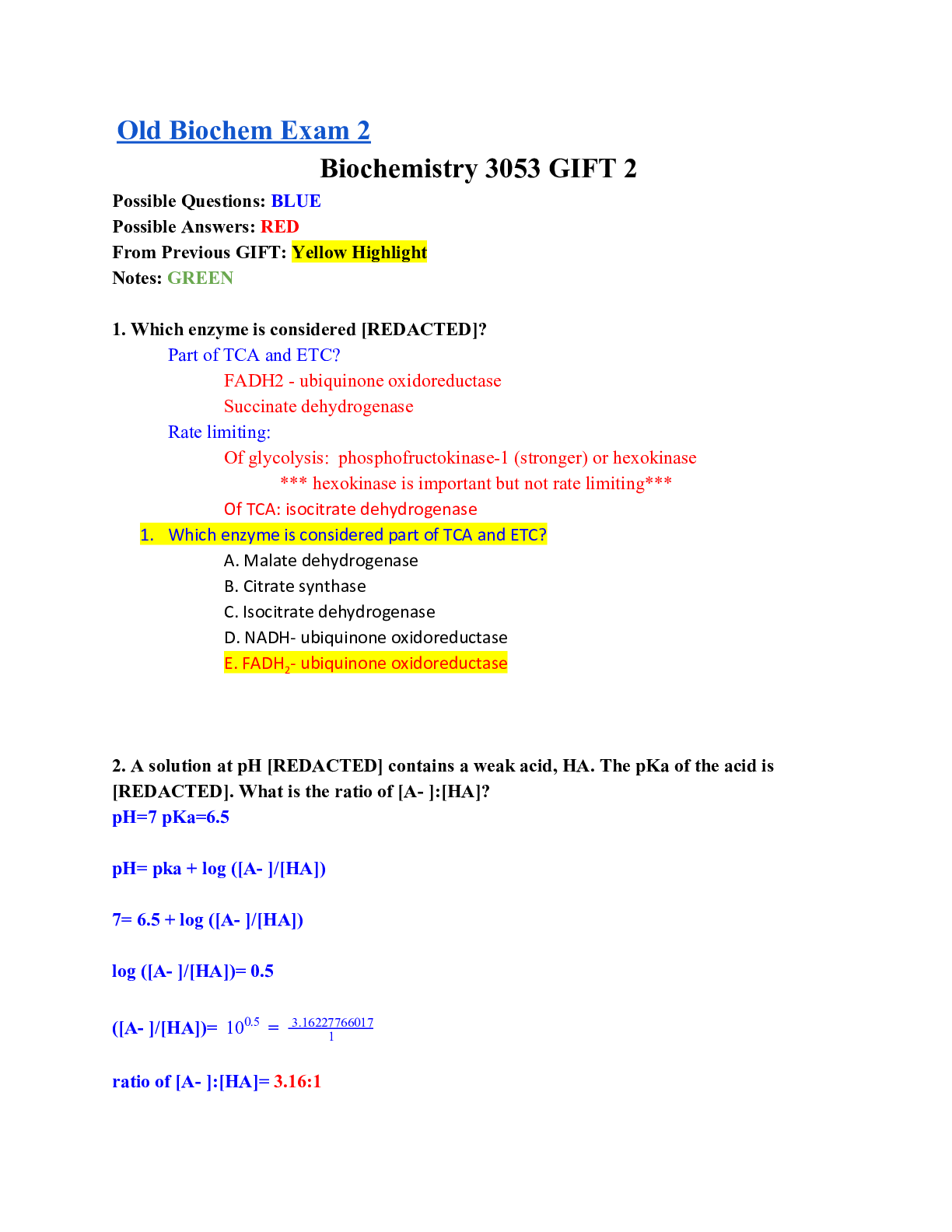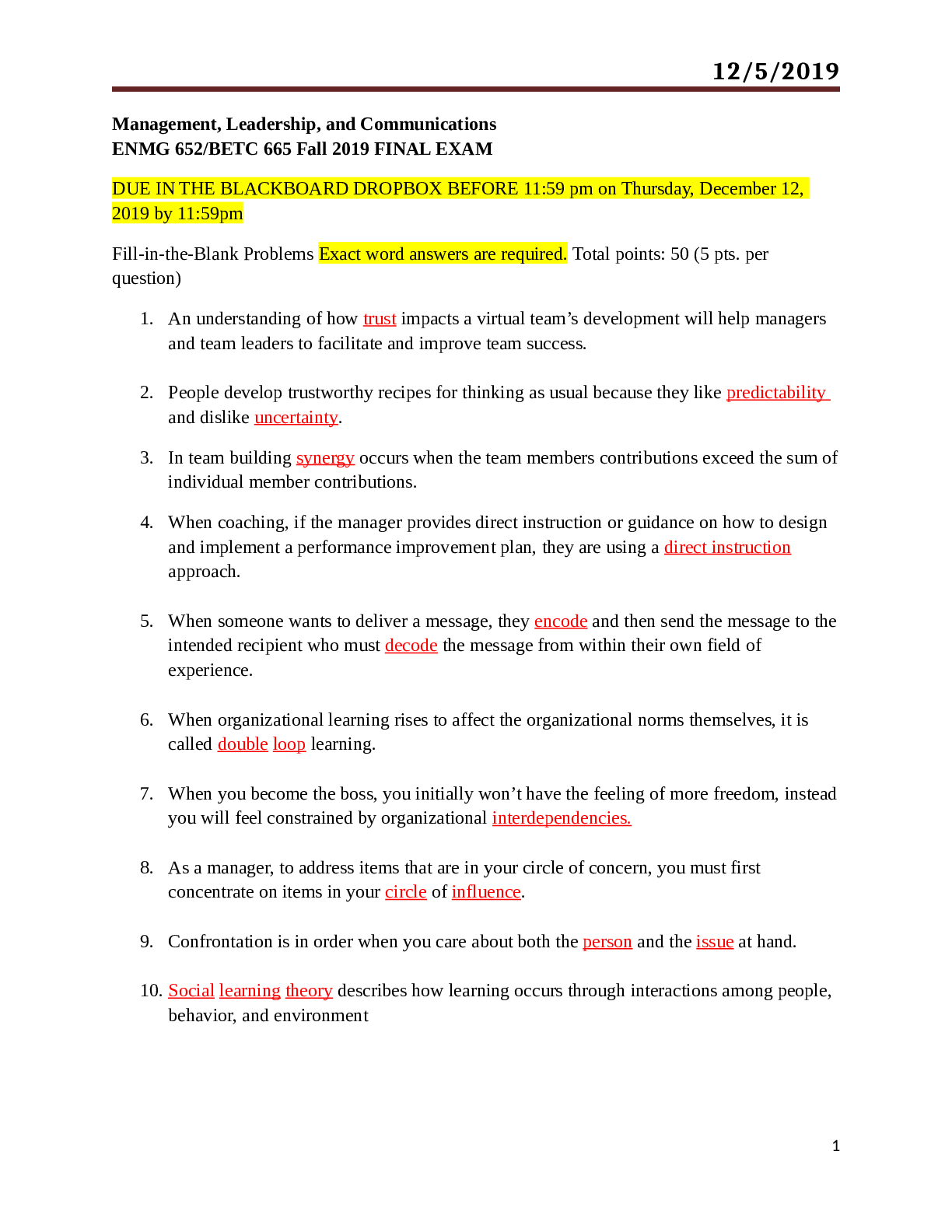Sociology > EXAM REVIEW > Introduction to Sociology Mid-Term Review Topics. 14 pages of the commonly tested and essential read (All)
Introduction to Sociology Mid-Term Review Topics. 14 pages of the commonly tested and essential readings for sociology course and quick exam preparation.
Document Content and Description Below
Introduction to Sociology Mid-Term Review Topics Sociological Theory and Research What is sociology? -It is a study on human behavior based on the premise that interaction with others affects human... behavior. - It studies human beings as social creatures -Sociologists study major areas like Individual Cognitive development Politics Economics Culture - The most Through Sociology combines these areas Understanding the social world -Theory - A generalization or simplification that can be used to understand patterns or predict events in the social world - Abstract conceptual ideas - Written as a statement about the world and not a question -Empirical research - The act of systematically testing observing or analyzing data for the purpose of understanding phenomena - Purpose of theories and research is for understanding and policy Policy - A plan of action implemented by an individual, group, businesses or the government for the purpose of influencing outcomes or changing the way things are Complications with theories and research - Provability- might be complex or difficult to prove - Assumptions, unquestioned or improvable - Result: Many different competing theories and ongoing debates Major sociological schools -Structural functionalism - Descriptive as opposed to critical - Studies society as an organism - Organs perform roles which keep society stable, ordered balanced, functioning. - Functional organs or institutions -Conflict theory - Situates institutions such as family, market, government in a larger social context. - Critical, current social systems and institutions work in the interest of those with power to detriment of those without - Inequality on a macro and micro level - Conflict regarding certain minorities and groups of people, eg gender, race - Structures - Ideology -Symbolic interactionism - People behave a certain way towards things based on the meanings society has given them - Research by interactionists focus on interactions that are easy to observe such as face to face rather than big macro level structural interactions - None of your social roles are real, they are reproduced and changed as humans socialize through observations and interaction of the behaviours of other humans. - Feminist perspectives - Some call it a major school of thought - Focus on the social position of women - May incorporate structural functionalism or symbolic interactionalism but usually is a form of conflict theory But Which theory? - There are three major schools - Structural functionalism as critiqued by ethnocentric patriarchal ignorant power inequalities - Symbolic interactionalist as critiqued in its extremes for being too material - Critiqued in its extremes for not being material enough Ontology - Comes before theory, it is our set of improvable beliefs about the nature of the world Epistemology - Is based in a particular ontology, given our ontology what can we discover or come to know through science Positivism - Positive Ontology: The world is seen as real and existing independently from the human existence it is seen as an ordered structured place that it governed by physical laws - Positive epistemology: Humans can use their rational minds to discover and describe the true nature of the physical and social worlds. - Structural functionalism is often based on positivism. Social constructivism - Social Constructivist ontology: our perception of the world is socially constructed. We thus individually and collectively create meaning from our experiences in a world where we can never know what is real. - Social Constructivist epistemology: All we can study is the world of signs, symbols, language and culture, what people report about their inner worlds, and our guesses at what they may be experiencing from the external indicators they give - Anything we makes is socially constructed - Humans create ideas, concepts , categories, cultures in order to make sense of the world - Our brains have been formatted by culture and language - Most extreme, there is no reality outside of your own head, what you perceive as the real world is a symbolic order that is given through social, symbolic interaction - Less Extreme: There is a real world but we do not see it directly, it is interpreted through the socially acquired structures of our own language - Implications: we can never really scientifically discover the ‘real world’, we create that world as we try to describe it (most extreme), or we can only understand it approximately in terms of metaphor (less extreme). - Symbolic interactionism is based largely in social constructivism Research methods -Multivariate research - Truths exist, mostly deductive and often related to structural functionalism -Interpretive research - Truth is subjective, mostly descriptive, inductive and often related to symbolic interactionism -Historical-comparative - Using theories, texts and or historical documents across history and comparing them to form theories, then test them and reform theories - Tries to use theory to make sense of history and to test theories accuracy against history - May be positivist or constructivist Specific research techniques - - Culture and Socialization Culture - Culture is the shared set of goals, attitudes, values, practises that characterize a group or an institution. - Culture is primarily based in language, a set of symbols that humans used to communicate to understand the world. - Culture is not monolithic or is it stagnant, it does not have definite boarders either. Things we do not / can not know - We do not know weather or not language and culture hide from view everything that is not defined by them. - We do not know if everything outside of that view is a small residual amount of information or large - We do not know if language and culture describes a world that exists or they create a new world - We do know that our language and culture both describe and create our social world Semiotics - Semiotics is the study of signs - Whether we believe in a material world, humans use signs to create meanings - Sign = Signified + Signifier - The signified is a concept that may or may not relate to something in the natural world - Eg. Tree, the word tree can symbolize an actual tree or another symbol (a concept of a tree) - Humans make meanings through the creation/ interpretation of signs - We think only in signs - Anything can be a sign as long as someone interprets it as 'signifying' something - referring to or standing for something other than itself: smells, objects, flavors, people. - Our vocabulary of signs comes to us through communication - Our thought and ability to perceive may be restricted by out vocabulary of signs - Our vocabulary of signs could be called our “culture” Cultures: problems with naming or categorizing cultures Cultural loss - Currently there are 7000 languages - One culture is lost every 2 weeks - By 2100 over half will be lost - 80% of the population only speaks one percent of its languages - Two-cultures models - Samuel J. Huntington: “Clash of Civilizations” - West: rational, scientific, democratic - Rest: religious, mysterious - Benjamin Barber “Jihad vs. McWorld” - Art and Aesthetics - Aesthetics: Judgments on sentiment, style, and taste - High culture / Low culture - Constantly Change and are Diverse. Why? - Pierre Bourdieu - Culture is a political weapon used to reinforce inequality - Habitus – habits, dispositions, tastes - Field – social surroundings - Social Capital – who you know - Financial Capital – what you have - Cultural Capital – what you know (specific to the field, constantly changes) - Symbolic Violence – calling someone out for their lack of cultural capital - Music Snobbery: - Language and cultural capital Identity and cultural capital - Socialization - Three main types -Primary - Primary socialization occurs mostly in the family - Intentional: What to eat, what to wear, what to play with, what is taboo, what is sad, what is funny, how to treat others, what behaviours are rewarded/punished - Unintentional: power, authority, gender, patriarchy, racism… -Secondary - Socialization does not end, people are constantly meeting and interacting with others. - Adult socialization differs from child socialization because it is based on accumulative learning - One gets to choose their socialization to a certain degree but it is limited by their past. - Socialization is Path dependant - -Anticipatory - Anticipatory socialization deals with learning the codes and norms of a group of people one is not a part of. - E.g. learning about high fashion when one cannot afford to take part - Learning about the lifestyle of doctors and lawyers – mimicking their actions - Education – learning how to behave in the work place Main agents of socialization - The Family: parenting behaviour can overcome risks such as bad neighbourhood, single parent, broken home. Etc. - The Media: Transmits stereotypes, violence, sex, morals - Peer Group: Extremely important in adolescence, expands experience beyond family, may reinforce media or family influences, or contradict - School: Transmit norms, values, roles, ideas of authority, reward particular behaviours, punish others - - Language and discourse (from text) - Language: A system of words both written and spoken, it is but one means of communication, communication is when the thoughts of one person are shared and understood by another person. Language is just a complicated set of systems deployed by rules. - Discourse: Discourse refers to a set of ideas, concepts and vocabulary that are regularly used together, we use certain discourses to talk about and understand an issue. An example of this is crime, Individualist discourse that understands crime as the actions of a certain individual, and collective discourse that views crime as a social problem. Multiculturalism (from text) - Multiculturalism in Canada can be seen when the tolerance and understanding of sub cultures in Canada are encouraged. Globalization and American Imperialism (from text) - Globalization refers to the fact that people all over the world are now connected, goods, services and information flow easily all across the globe. Because cultures interact so easily with one another now, certain countries such as Canada try to preserve its culture by providing Canadian originated content to the world Inequalities of Class, Gender, and Ethnicity Continuum - Class, race, gender all represent arbitrary constants along a continuum. - Used to divide people (grade example) - Socially constructed categories Class - Class is usually used to describe a level of economic wealth(sometimes it is cultural , high/low class) -Durkheimian - Different levels of wealth along a continuum - Inequalities were natural -Marxian - Two distinct categories - Class is ones relationship to the “means of production” - Inequalities were based on exploitation and subjugation - Proletariat (workers), Bourgeoise(owners) Economic/class inequality - Economic class/ inequality exists between, within and across countries World income distribution Inequality within and between societies Gini coefficient [Show More]
Last updated: 2 years ago
Preview 1 out of 14 pages
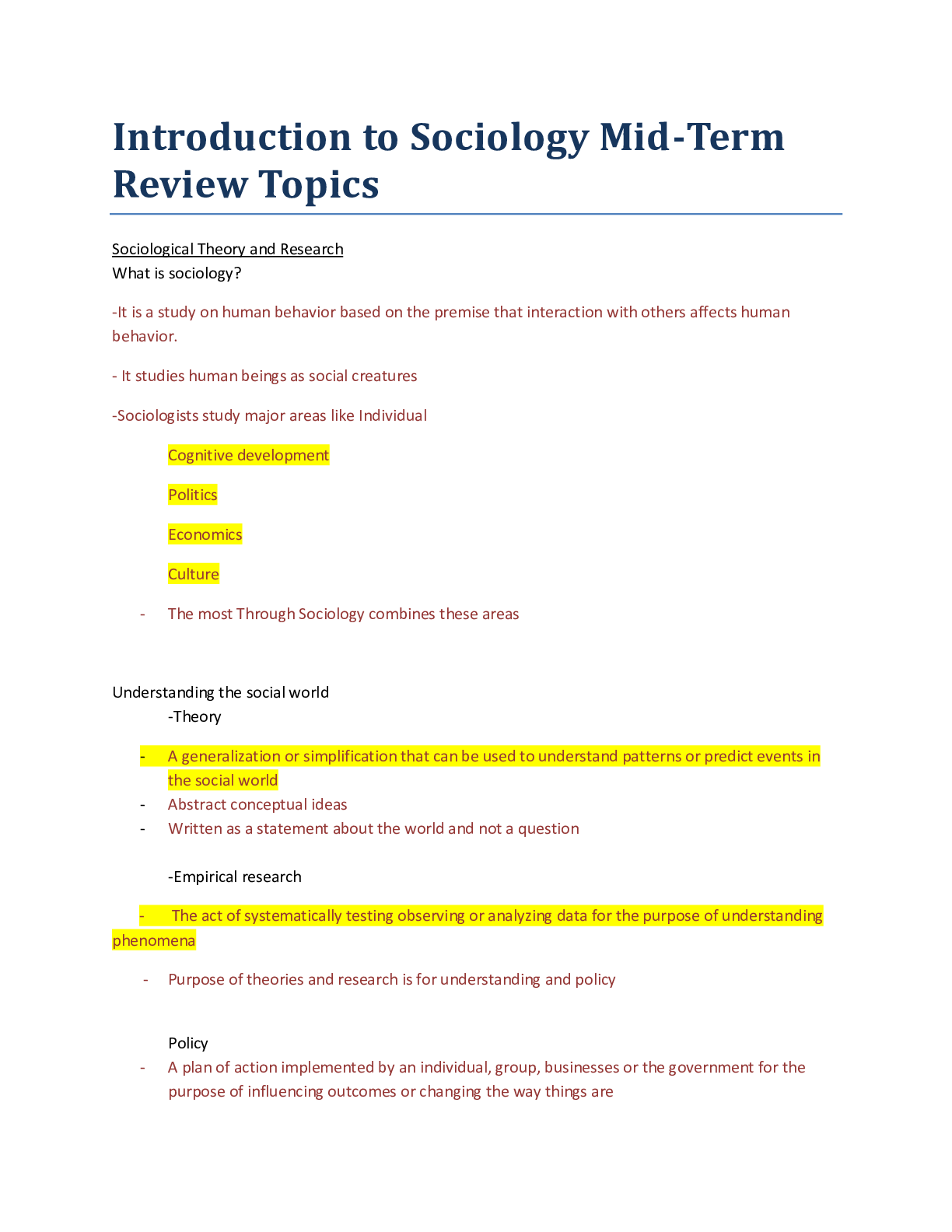
Buy this document to get the full access instantly
Instant Download Access after purchase
Buy NowInstant download
We Accept:

Reviews( 0 )
$9.50
Can't find what you want? Try our AI powered Search
Document information
Connected school, study & course
About the document
Uploaded On
Dec 19, 2020
Number of pages
14
Written in
Additional information
This document has been written for:
Uploaded
Dec 19, 2020
Downloads
0
Views
150


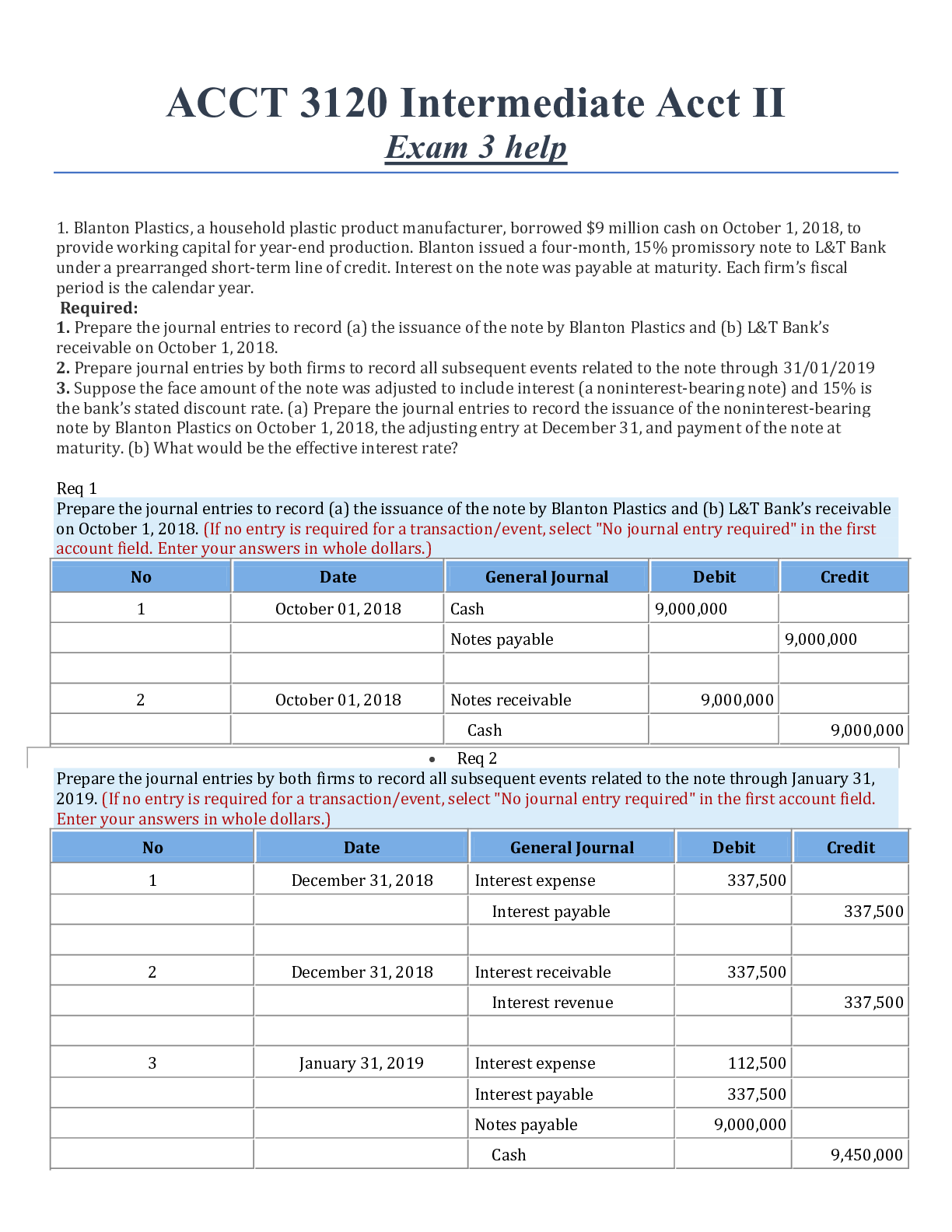
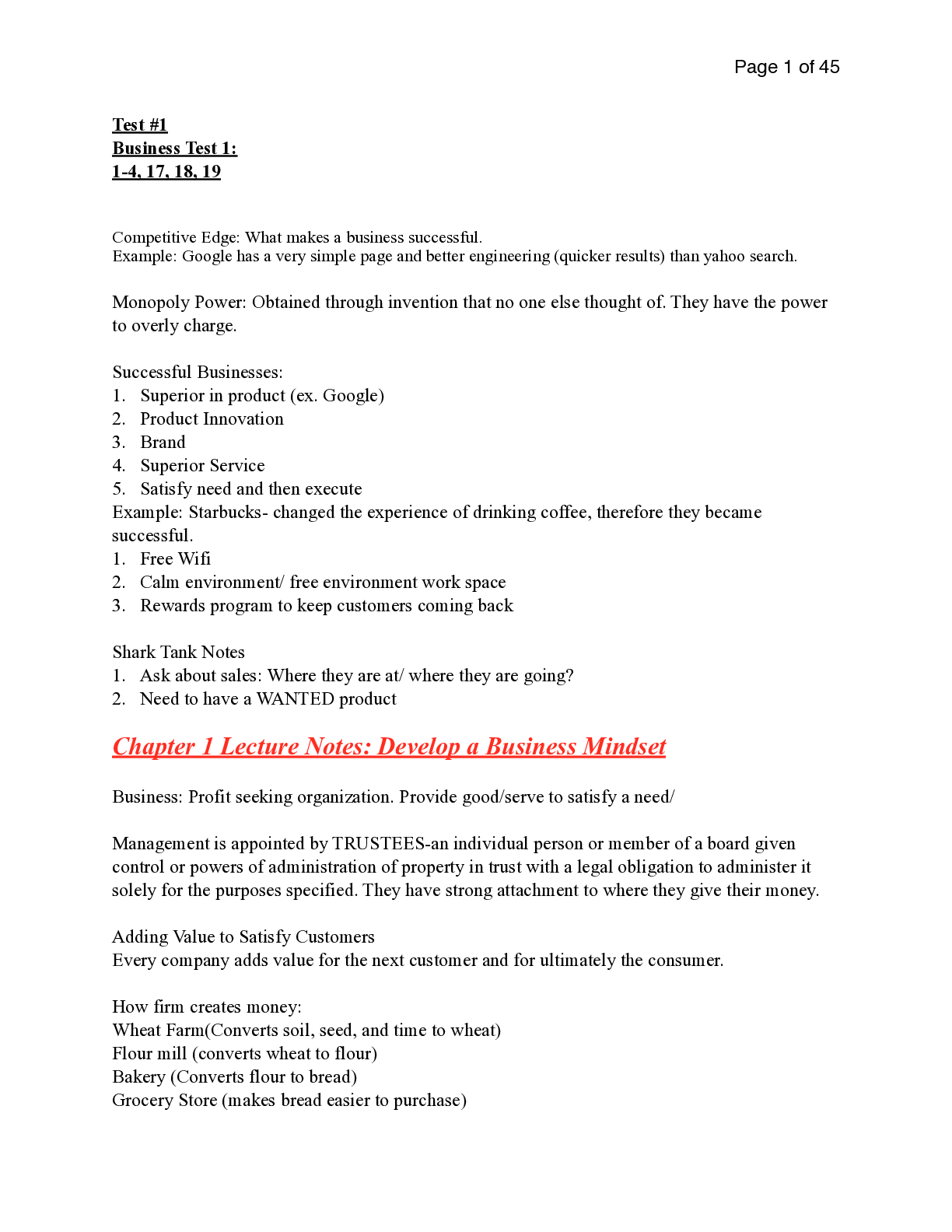
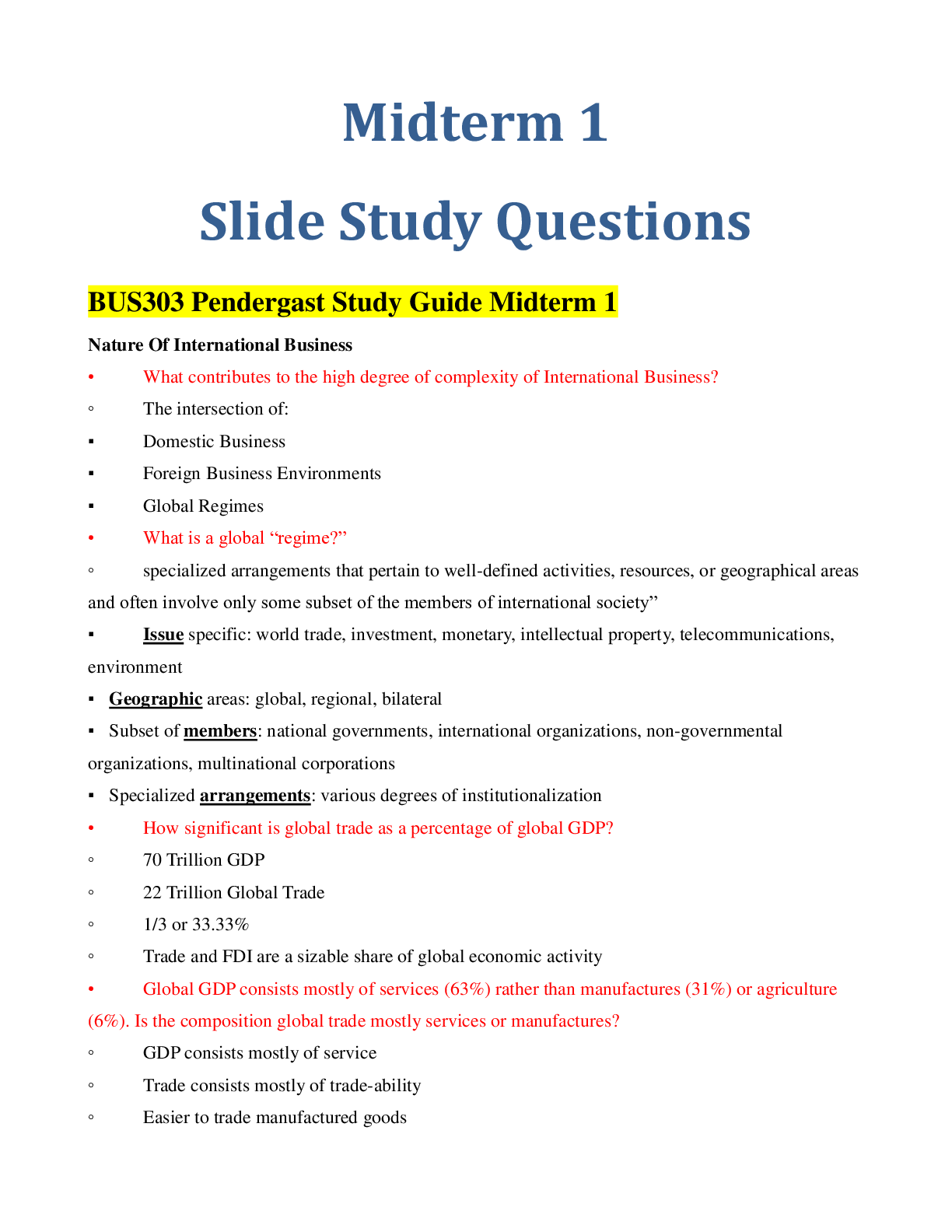
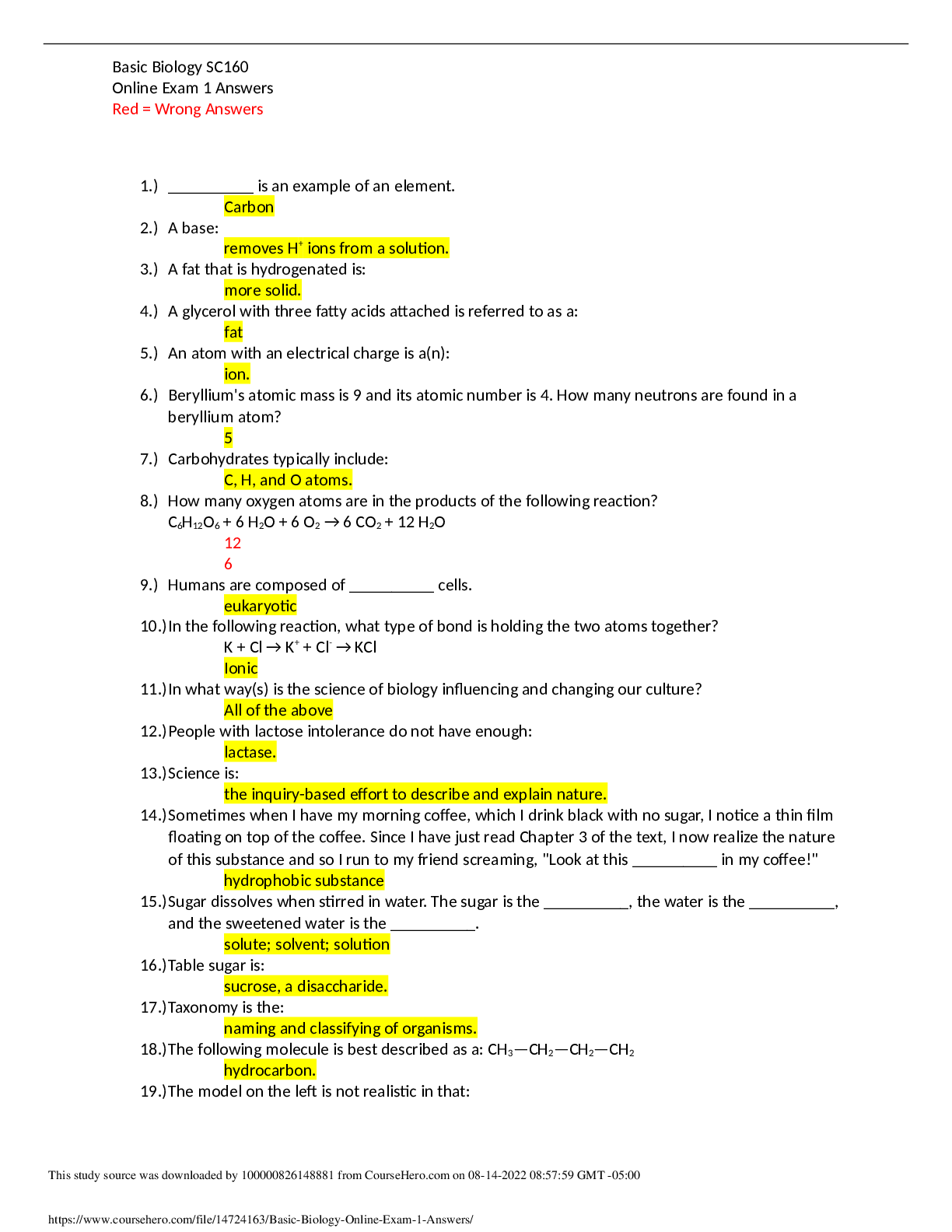
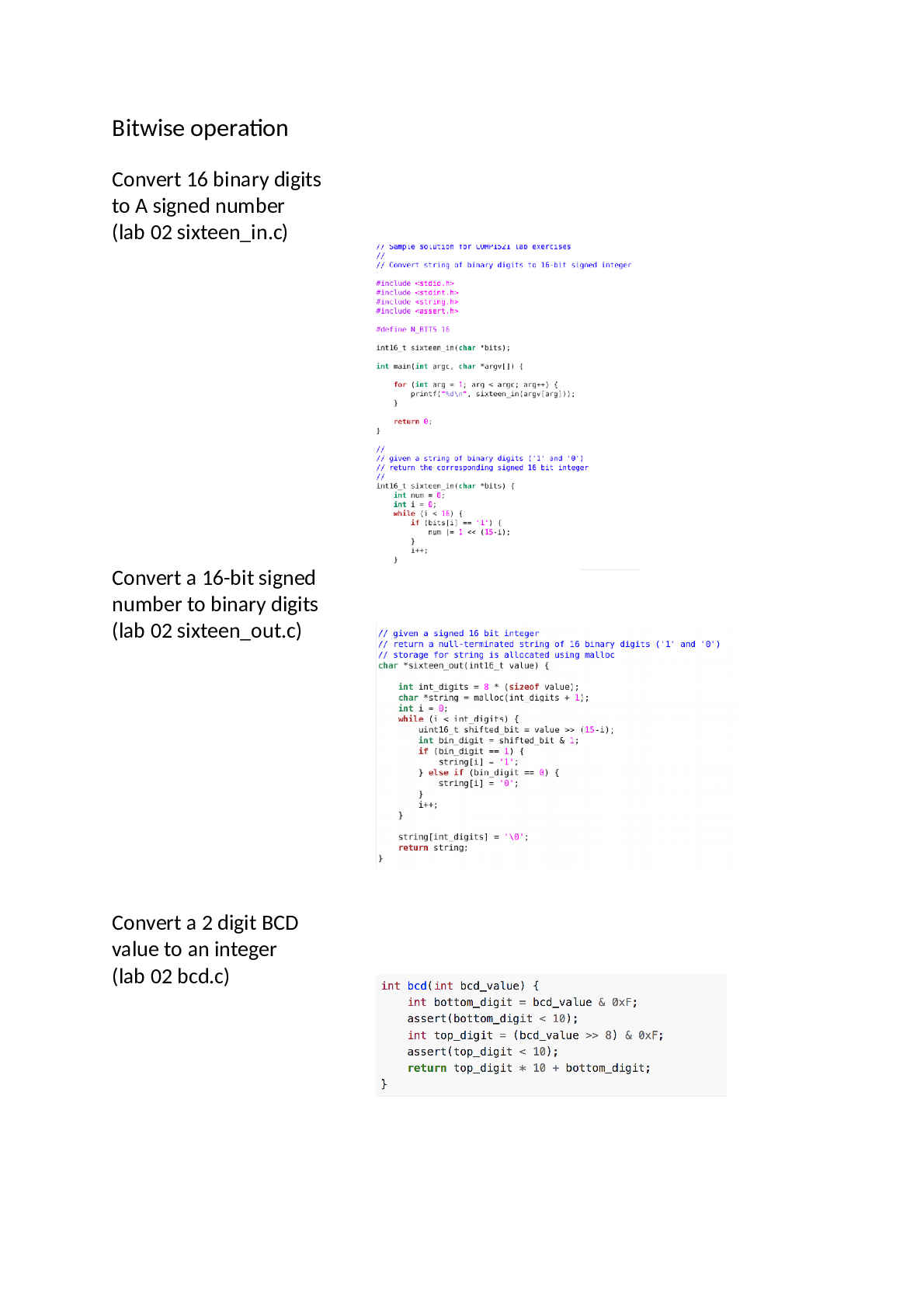
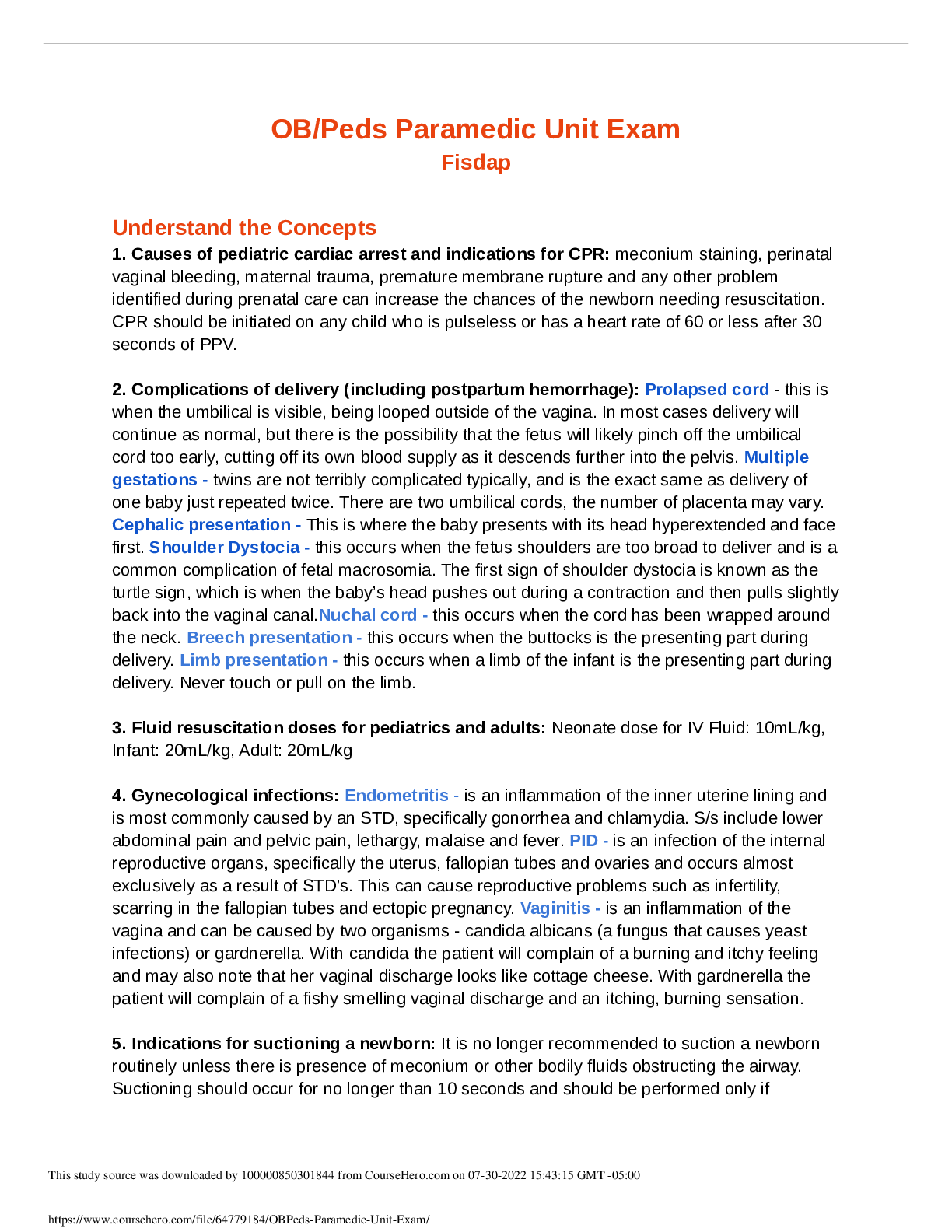
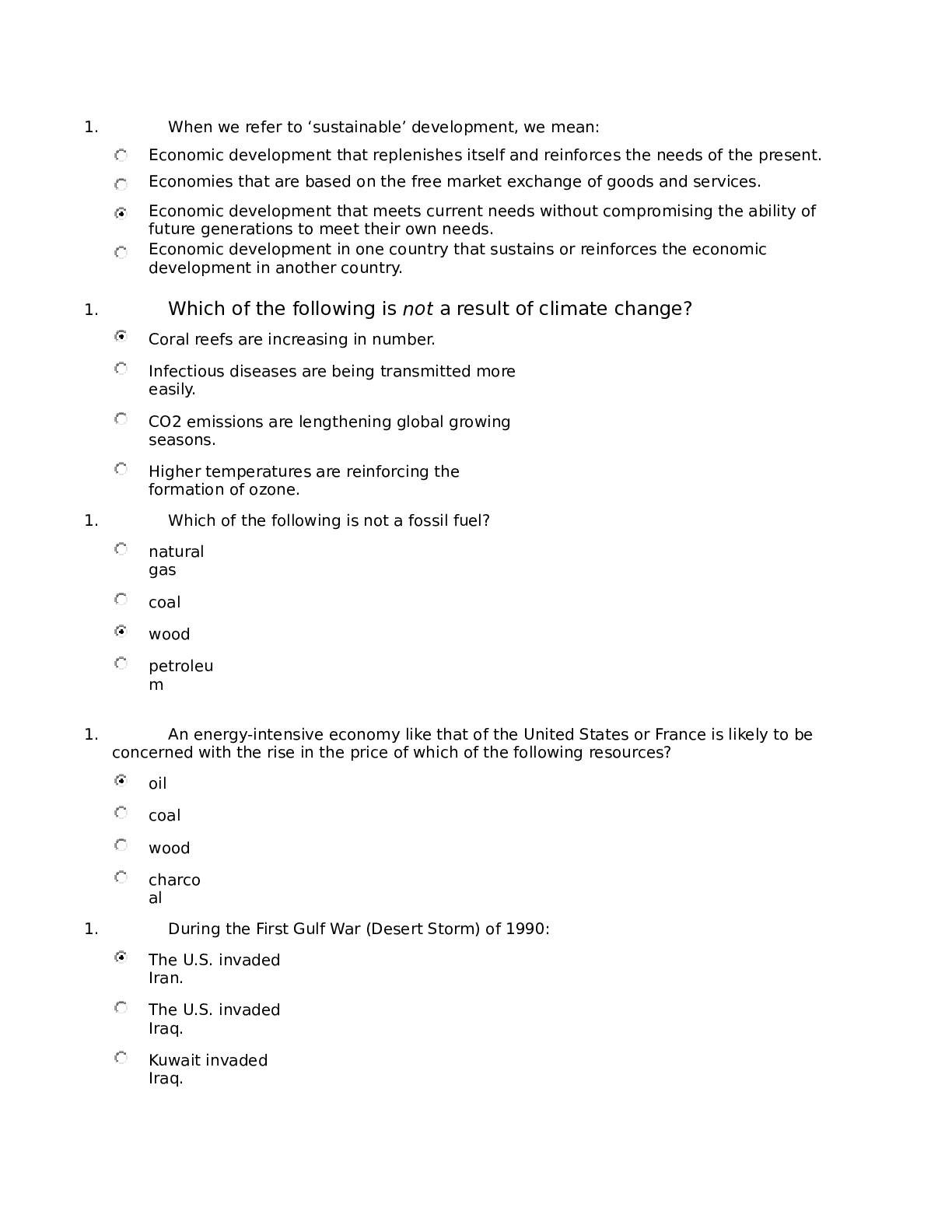
 (1).png)

